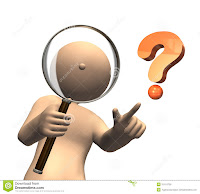1. Multiple POVs speed up the story. No matter how busy your protagonist is, he or she can only do that many things in a day. There will be ups and downs, and readers really don't need to know all the details. Of course, you can leave out the boring moment (and you should!), but a better way to handle this is to switch to a different POV during the main character's down time. Normally, stories with multiple POVs will have more actions and a faster pace, which is preferred by "the modern impatient readers".
2. Multiple POVs allow you more freedom in telling the story. For example, in my latest book, STRANDS, there is a teenage girl who knows little about space, just as some of the readers. Then when she gets exposed to novel ideas such as neutron stars and dark matter, she can ask for clarifications. This way, scientific background necessary for readers to follow the story can be introduced in live conversations, rather than info-dumping. She can be surprised by the sheer mass of black holes. She can wonder "What if I run on the surface of a neutron star?" She can also observe the main character and make comment on his action. Sometimes you may want to hide certain information regarding a character, or you may even want to mislead the readers to believe otherwise. This can be easily achieved by switching to the POV of another character.
3. Multiple POVs make it easier for you to portrait the characters. When a character appears, of course you can, and should, describe his/her physical look. But when you do it too much, especially when you add too many subjective judgments, it feels unnatural. This will not be an issue when you are speaking from another character's view. You can even beef it up by adding discrepancies between your, the author's, description, and a character's description. This way you can reveal valuable information about the personality of the observing character, and his/her relationship with the other character. Then you can let the other character describe the appearance of the first character.
4. Multiple POVs create drama and contrast. If you write solely from the view of a busy husband, it is difficult for readers to grasp the loneliness of his wife, although this can be a desired effect sometimes. You can write about the cocktail party held in the husband's company, followed by resentment of the wife who's left alone right before the husband enters home. Or about the husband as a successful worker, and a grudging co-worker who plans to bring him done. Now here you have to be careful in choosing the amount of "overlap" between the events experienced by individual characters. Normally, to keep things going, you don't want any overlap. In rare occasions, when two characters have drastically different views of the same event, you can have some overlap, but remember, you have to keep the ball rolling or readers will be tired reading the same thing twice.
Okay, just one last tip: do not jump from head to head too frequently. Stay with a fixed POV at least throughout a scene, and better throughout a chapter, unless the location is changed. For short stories, I try to end them with the POVs that I started with. It adds a feeling of completeness.

No comments:
Post a Comment
Comments highly appreciated! - Fiona